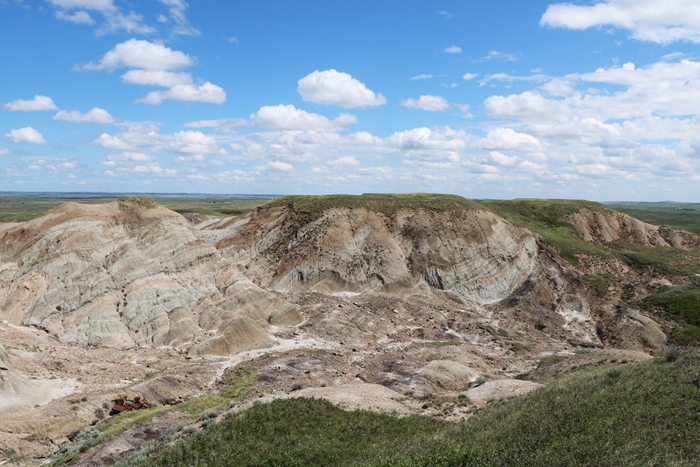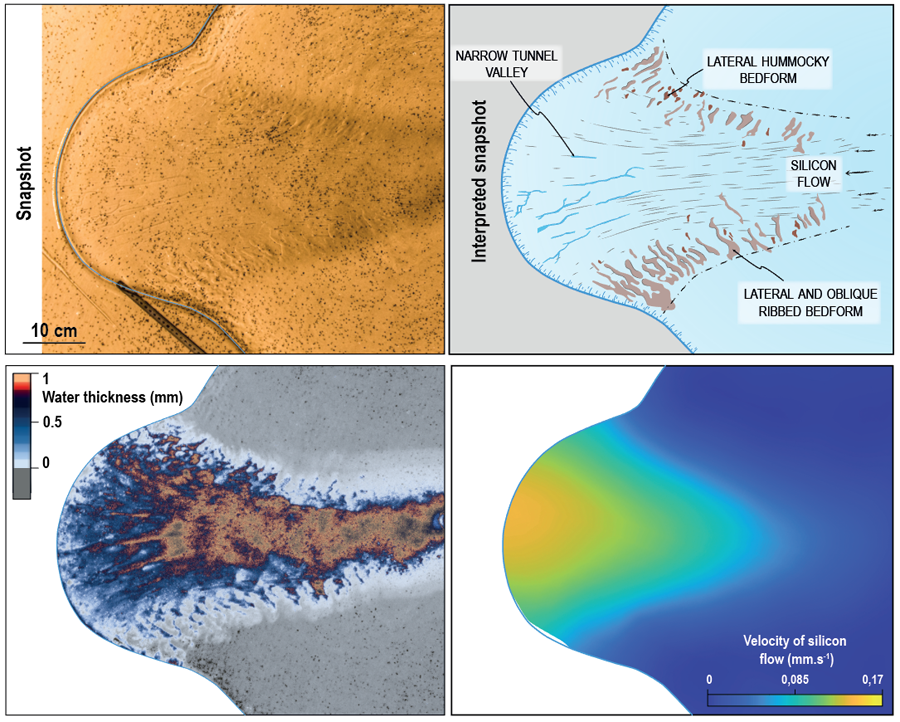Ice-Collapse Project
The dynamics of ice sheet collapse in deglaciation periods – Ice-Collapse
During periods of climate changes, ice sheet shrinking is controlled by the collapse of vulnerable ice shelves at the tip of fast-flowing ice streams. Ice stream collapse has not yet been observed and we therefore lack solid historical data and models to predict accurately their consequences, thus limiting our ability to include such events in sea level projections.

In this project, we aim to combine for the first time palaeoglaciological data acquired from former ice stream beds of the Laurentide Ice Sheet with a new experimental setup we developed in our lab to investigate processes of collapse. We here address a hot topic to investigate the ice dynamics/landforms linkage to establish a process-based spatial and temporal model of ice sheet collapse.

(copyright: Jean Vérité / Édouard Ravier)xemple de résultats issus de la modélisation analogique d’un ice stream. La modélisation permet de suivre le développement des morphologies sous-glaciaires, les caractéristiques du réseau hydrologique sous-glaciaire et la vitesse d’avancée de l’ice stream
(crédit: Jean Vérité / Édouard Ravier)
The project integrates three complementary approaches: detailed regional-scale mapping of the geomorphological record left by short-lived ice streams, analyses of key lithological, stratigraphical and deformational characteristics of the soft-bed of ice streams and physical modelling of unstable glacial systems. In this project, we first aim to reconstruct the origin, timing and processes of past ice stream collapse along the Laurentide Ice Sheet. The combination of experimental and palaeoglaciological data will also contribute to establish new semi-empirical laws that will relate soft-bed changes (erosion, sedimentation, deformation), development of subglacial drainage systems and their efficiencies, ice flow velocities, meltwater production rates and porewater pressure. The numerical modeling community will then be able to implement these new parametrization laws to include ice stream collapse in their ice sheet models.
The project coordinator is Edouard Ravier, lecturer at Le Mans University.

